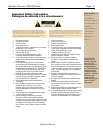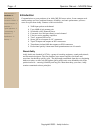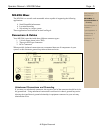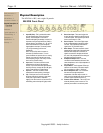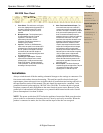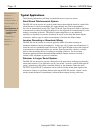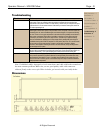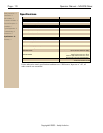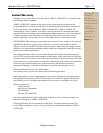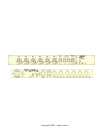
Page - 8 Operator Manual – MX-206 Mixer
Copyright© 2006 – Ashly Audio Inc.
Typical Applications
The following information will help you make the most of your new mixer:
Small Sound Reinforcement System
The MX-206 can be used to mix typical sound sources that might be found in a small club,
school theater or similar environment. Six input channels are used for microphones
for vocal or instrumental pickup. The Tape/CD In and Tape Out provide feeds to and from
a cassette deck or other recording/playback device for playback of recorded material, or for
making a recording of the mix. The main PA power amplifiers (or any additional
equalizers or electronic crossovers which may be used) are fed from the Stereo Output
connectors, while a stage or control room monitor is fed from the Mono Output.
Location Recording or Broadcast Mixing
The MX-206 can be used to mix sources typically found in location recording or
broadcast situations (mostly microphones). In this case, all six inputs are microphones, as
would be used in a roundtable panel discussion. The Tape/CD Input receives the output of
a cassette deck or other playback device, and the Tape Out provides a feed to a cassette
deck or other recording device for making a recording of the mix. For live remote
broadcast applications the transformer-balanced Mono Output connector can feed a
suitable video, telephone or press-box interface.
Submixer In Larger Sound System:
The MX-206 can be used to provide a drum mix to the main mixer without tying channels
on the main console. Up to eight mics can be "pre-mixed" in stereo, with all drum-specific
gating, compression, and effects controlled directly by the drummer. Either the main
OUTPUT or the SUB OUT connectors can be used to feed the mixed drum signal to the
main mixer. If there is significant distance between the MX-206 and the "master" mixer,
use the pseudo-balanced or transformer- balanced Main outputs for long cable runs.
Safety Instructions – 3
Introduction - 4
MX-206 Mixer – 5
Connectors & Cables – 5
Physical Description - 6
Installation – 7
Typical Applications - 8
Small Reinforcement
Location/Broadcast
Submixing
Troubleshooting - 9
Dimensions - 9
Specifications - 10
Warranty - 11





